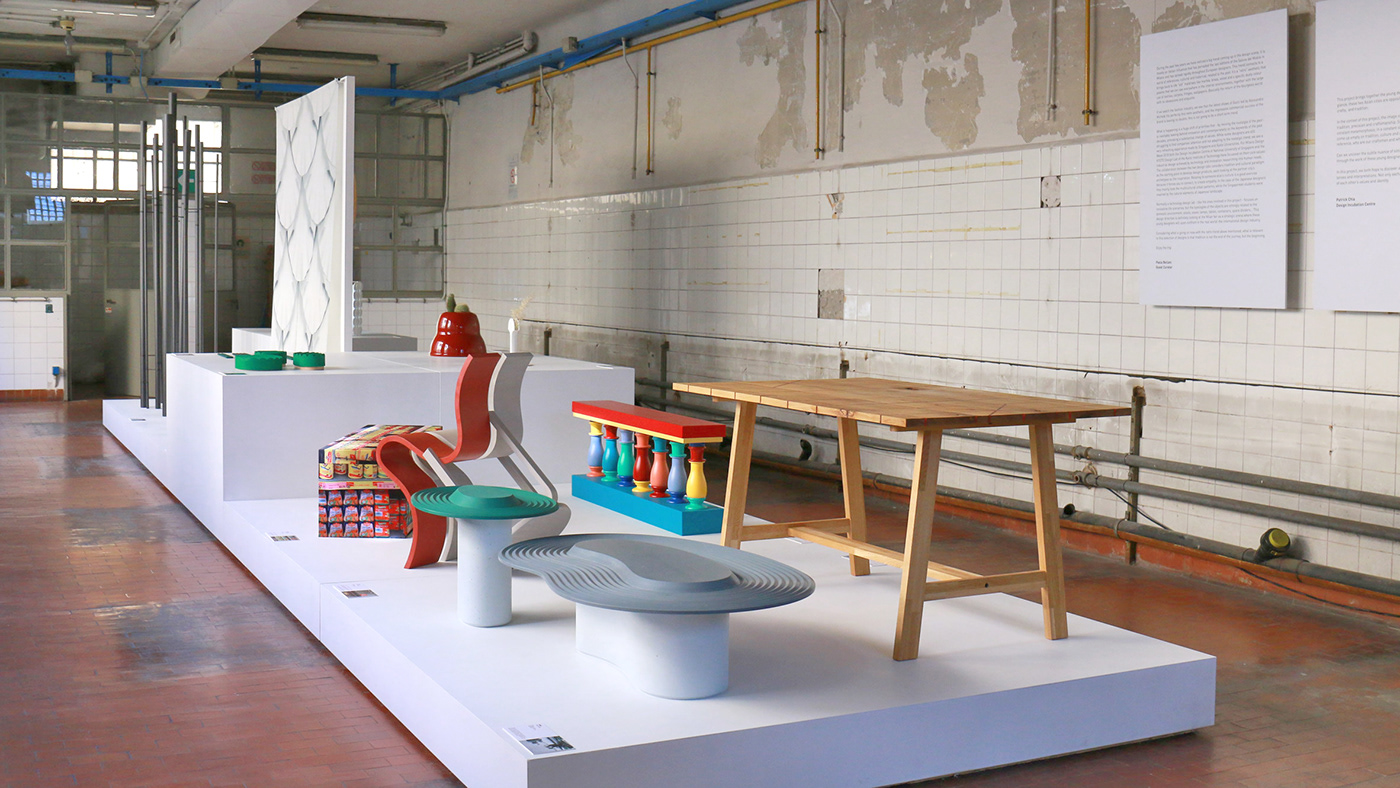
EXCHANGED FORMS
The exhibition springs from an experiment of “propagation and indigenization of culture”, a process where design students from Kyoto Institute of Technology and the National University of Singapore exchanged pictures of objects, places and sceneries that are typical of their own countries.
On the basis of this exchange, students designed objects where the suggestions received are filtered through their own cultural and social background. The result of this process looks very interesting since it connects two distant realities. At first glance, these two Asian cities are opposites, in culture, landscape, weather, language, crafts and tradition. The image of Kyoto brings forth an overwhelming sense of tradition, precision and craftsmanship. Singapore, on the other hand, is a city that is in a constant metamorphosis, in a constant process of tearing down and rebuilding. The typologies of the objects designed by the students are strongly related to the domestic environment: stools, vases, lamps, tables, containers, space dividers. This design direction is definitely looking at the Milan fair as a strategic arena where these young designers will soon have to confront the real world: the international design industry. Exhibited at Ventura Project Università, the 18 works designed by both students will be mixed together. This is an intentional choice that aims to provoke and challenge the visitor to find out the origin of each piece.
Curators: Patrick Chia and Eizo Okada
Guest Curator: Paola Bellani
Project Coordinator: Yuta Nakayama
Production Team: Willie Tay, Naroth Murali, Colin Thiam, Chen Chee Keong, Shin Yamashita
Graphic Design: Ricky Ho
Graphic Design: Ricky Ho
Photographers: Tomoki Hashidume, Eri Horii, Eunice Er, Shen Fang Yu, Tracy, Teng Yan Wen
Exhibition Design: Willie Tay
17 April 2018 – 22 April 2018; 10am to 7pm
(10am to 6pm on 22 April 2018)
Ventura Future UNIVERSITA
(viale Abruzzi 42, 20131 Milan, Italy)
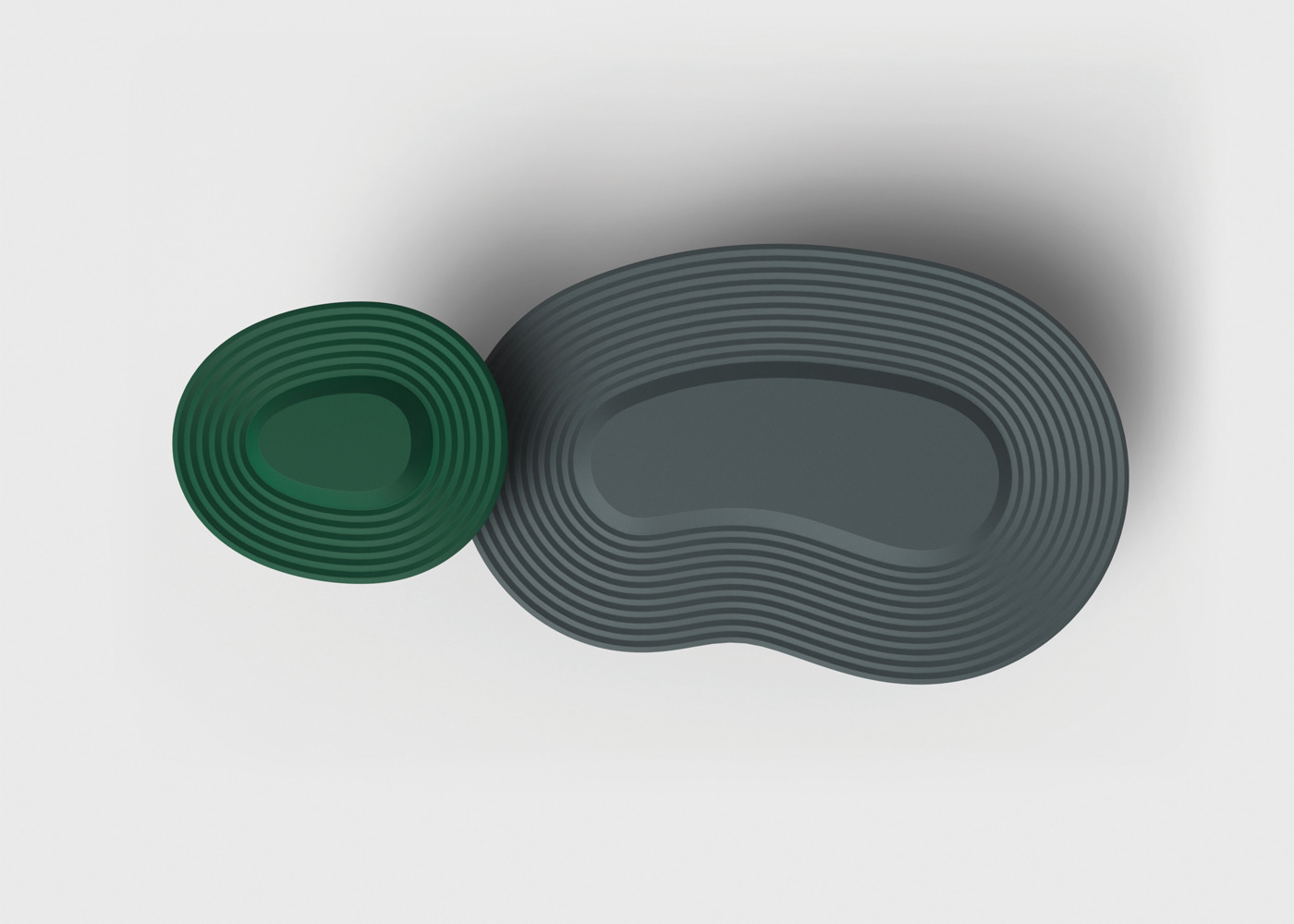
RIDGE
Tan Sei Yee
TABLES
MATERIAL: Casted Resin
DIMENSION: W1452 D951 H300 / W540 D449 H400
Ridge is a set of low tables inspired by the patterns of Kyoto’s famous Zen rock gardens.
The juxtaposition of wavy ridges and a heightened, flat surface amplifies the subtle
graphical composition of the Zen gardens

HIROGARI
Lee Hsiao Fong
VASE
MATERIAL: Corian, Maple Wood
DIMENSION: W135 D346 H39
Inspired by the handle of a Japanese uchiwa fan, Hirogari guides the arrangement of
flowers and leaves in a fan-like display. Flowers can be composed asymmetrically, inviting
viewers to complete the fan with their imagination.

TUBO
Fong Sook Yin
CONTAINERS
MATERIAL: 3D Print Nylon
DIMENSION: W277 D215 H64 / W256 D123 H64 / W163 D163 H64
Tubois a trio of lidded canisters for storing miscellaneous items at home. The lids are a
graphical extraction of the linear, tubular tea aisles spanning across the mountainsides of
Kyoto, emphasising its three-dimensional, lush quality.

PORTAL CABINET
Aaron Chooi
CABINET
MATERIAL: Teak Wood, Acrylic Panel
DIMENSION: W1079 D1079 H1790
In Shinto, the torii gate separates the mundane and the divine, It physically and metaphorically
stands at the threshold of what is considered secular and sacred. In Kyoto, visitors to shinto
shrines and temples are led through these gates, and are often awed and amazed by the unique
experience this act entails. This cabinet draws upon the act of this movement and attempts
to bring this experience into the home, a place where most modern men consider sacred.

TOMBO TABAKO-BON
Naroth Murali
TOBACCO TRAY SET
MATERIAL: Aluminium, Walnut
DIMENSION: W20 D300 H12
Tombo originates from the word “dragonfly” in Japanese, and is the semantic inspiration
for this tobacco tray set, or “tabako-bon”. The ritual of extending a warm welcome to a
guest back in the olden days with a short smoke takes a modern form with this set, with
the added quality of being able to disassemble for cleaning.

HORI AND VERTI
Cheryl Ho
LAMPS
MATERIAL: Maple Wood, LED
DIMENSION: W431 H412 D188 / W796 H497 D120
Inspired by the way light filters through the lattice patterns of Japanese windows, these
wall lamps serve to bring out the horizontal and vertical qualities individually. Together,
Hori and Verti form a grid lattice when overlapped with one another, creating intrigue and
a new dimension to the piece.

BOO & BAM
Edmund Zhang
TRAY & CONTAINER
MATERIAL: 3D Printed Onyx
DIMENSION: W240 D240 H220 / W95 D95 H255
Boo & Bam is a pair of 3D-printed carbon fibre vessels, with their components held
snugly together by lengths of tied braided ropes, paying homage to the traditional
construction of Japanese bamboo fences.
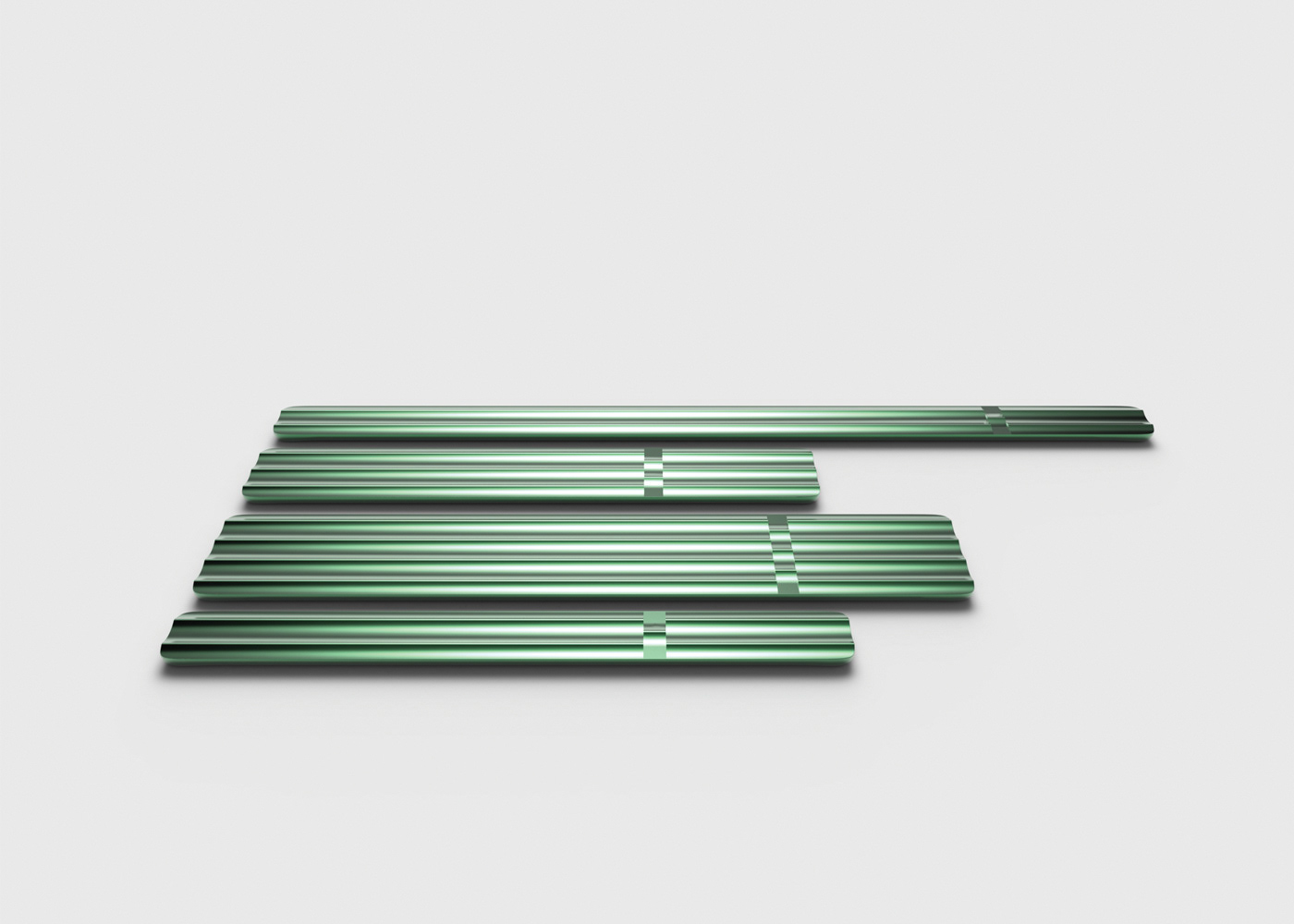
OTA
Jon Chan Hao
PLATES
MATERIAL: CNC Milled Anodized Aluminium
DIMENSION: W602 D40 / W365 D60 / W440 D80 / W365 D40
By drawing a similarity between the rhythmic patterns found on the walls of traditional
houses in Kyoto and the banana leaf packaging used to wrap ‘otak-otak’ - a grilled fish
cake commonly found in Singapore, Ota is a set of plates that celebrates this similarity -
the patterns are displayed into a form reminiscent of the otak-otak packaging itself.

CARBON KEKKAI
Willie Tay
SPACE DIVIDER
MATERIAL: Carbon Tube, Aluminum Rod
DIMENSION: L1016x B350 x H2400
The term Kekkai originates from an ancient past of religious beliefs, and the common
notion of Kekkai means “to limit access of a zone”. This notion has evolved to become a
commonality in the spaces that we build around us.
By utilising another lightweight and strong composite material – Carbon Fibre, the traditional
pragmatic and semantic value of bamboo has evolved to fit this modern piece of design
- Carbon Kekkai, thus, becoming a representation of a space divider that separates and connects;
a transition that allows exchanges.
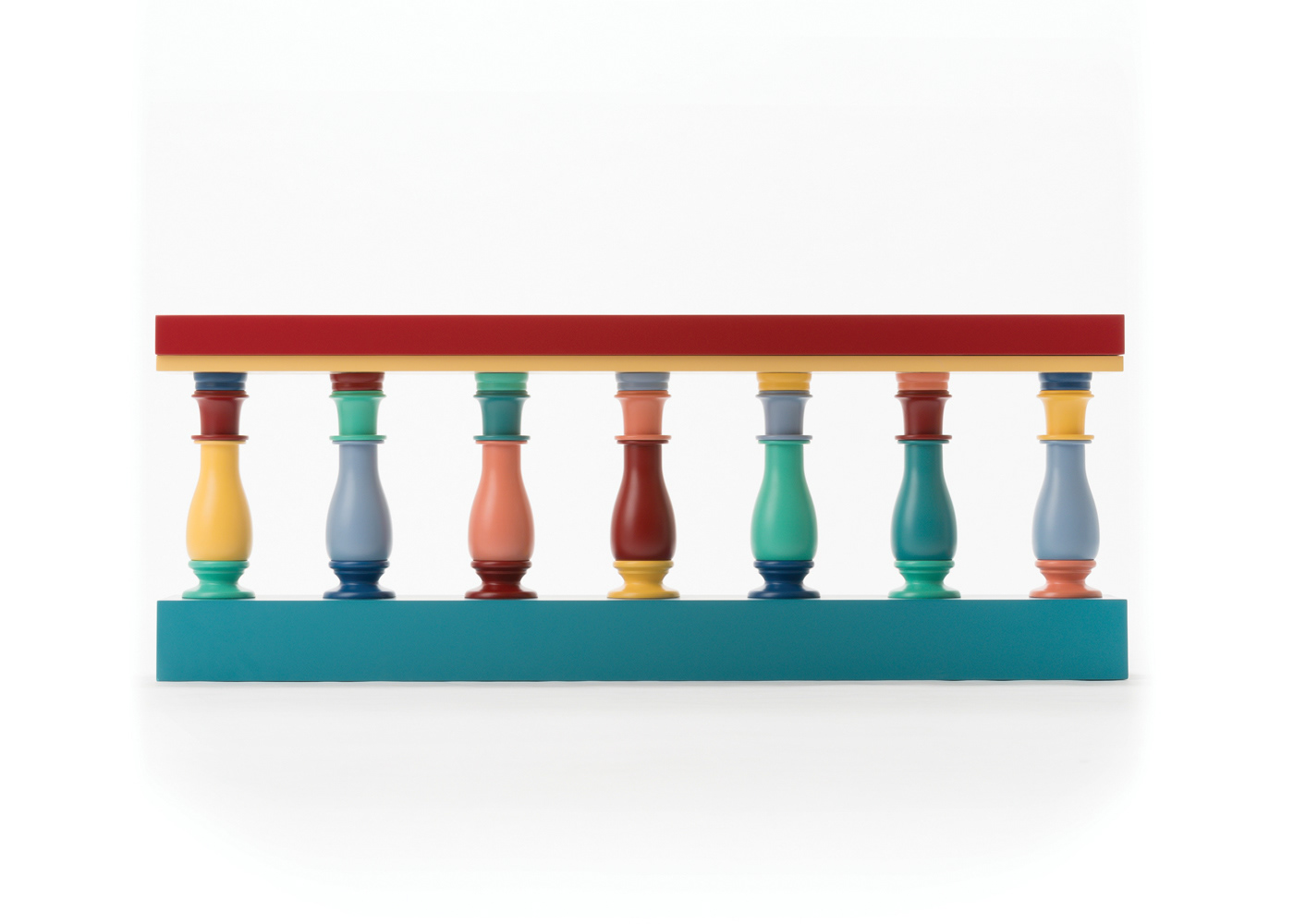
THE SINGAPORE BENCH
Tomoko Murakami
BENCH
MATERIAL: Wood
DIMENSION: W1200 D200 H450
What do you think are the colours of Singapore?
Singapore is a multi-ethnic country where various cultures exist compactly. In some areas,
there are colourful scenes with highly saturated buildings. To me the colours in this
collection represents multicultural Singapore. Referencing a Singapore handrail painted
in countless luxurious colours. I trimmed a part and made it into a bench that seems to
spread forever to the left and right.
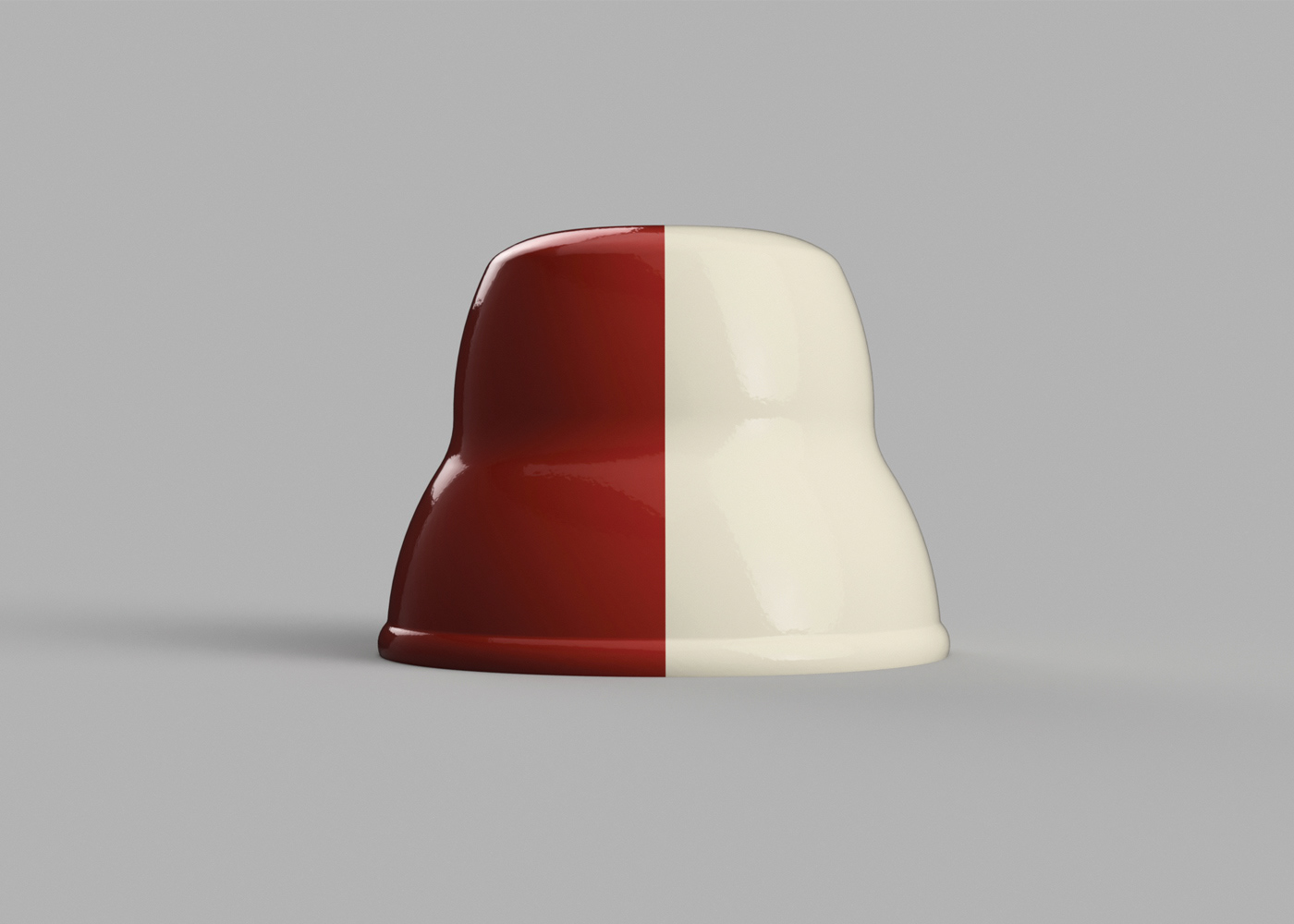
SILVER POT
Aika Nishiyama
FLOWER POT
MATERIAL: 3D printed PLA, Lacquer
DIMENSION: W342 D342 H250
A flower pot with extracted colours from Singapore train seats.
The different colours of the seat represents priority seating (a chair reserved for people
who need it the most). Priority seats were once called silver sheets in Japan.The shape
of the flower pot represents a state of viewing seat from the front. The product was
produced with a 3D printer and finished with Japanese lacquer to recreate colour and gloss.
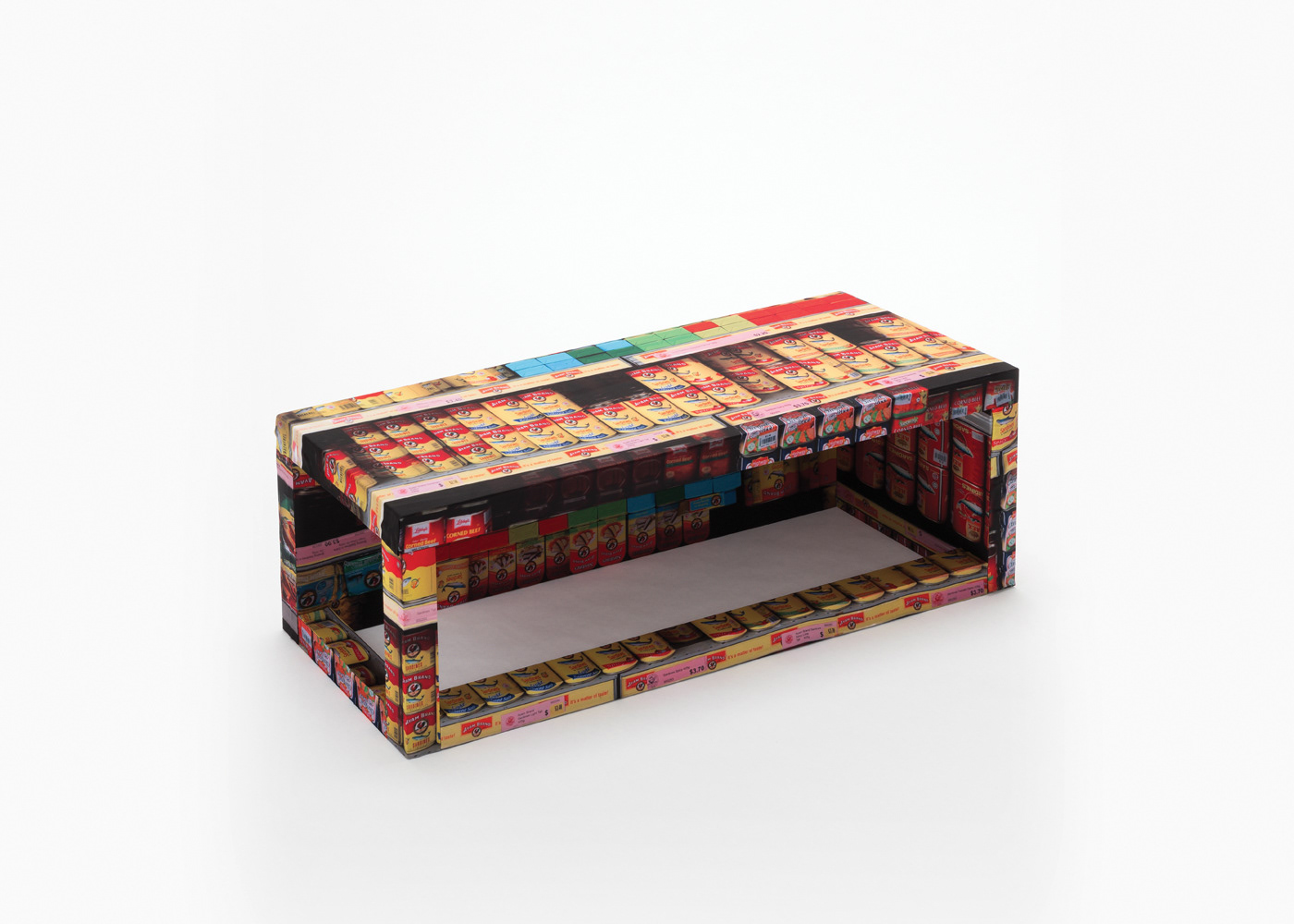
SHOWCASE
Kanta Nakano
BENCH
MATERIAL: Wood Textile
DIMENSION: W1000 D350 H350
“Showcase” is a bench that literally popped out of a ordinary supermarket shelf.
In an age of excessive information,the designer explores new possibilities of photographs
as a pattern or material through this piece.

SOFT SCALES
Emma Huffman
TEXTILE
MATERIAL: Silk Crepe
DIMENSION: W1000 H2500
The statue of the Merlion, a creature with a body of a fish and a head of a lion, is one of
the best known symbols of Singapore. “Soft Scales” was inspired by the repeated overlays
of the Merlion’s thick and soft looking scales which create shadow and light. The pattern
and texture was delicately recreated through 3D modeling and printing of silk crepe.
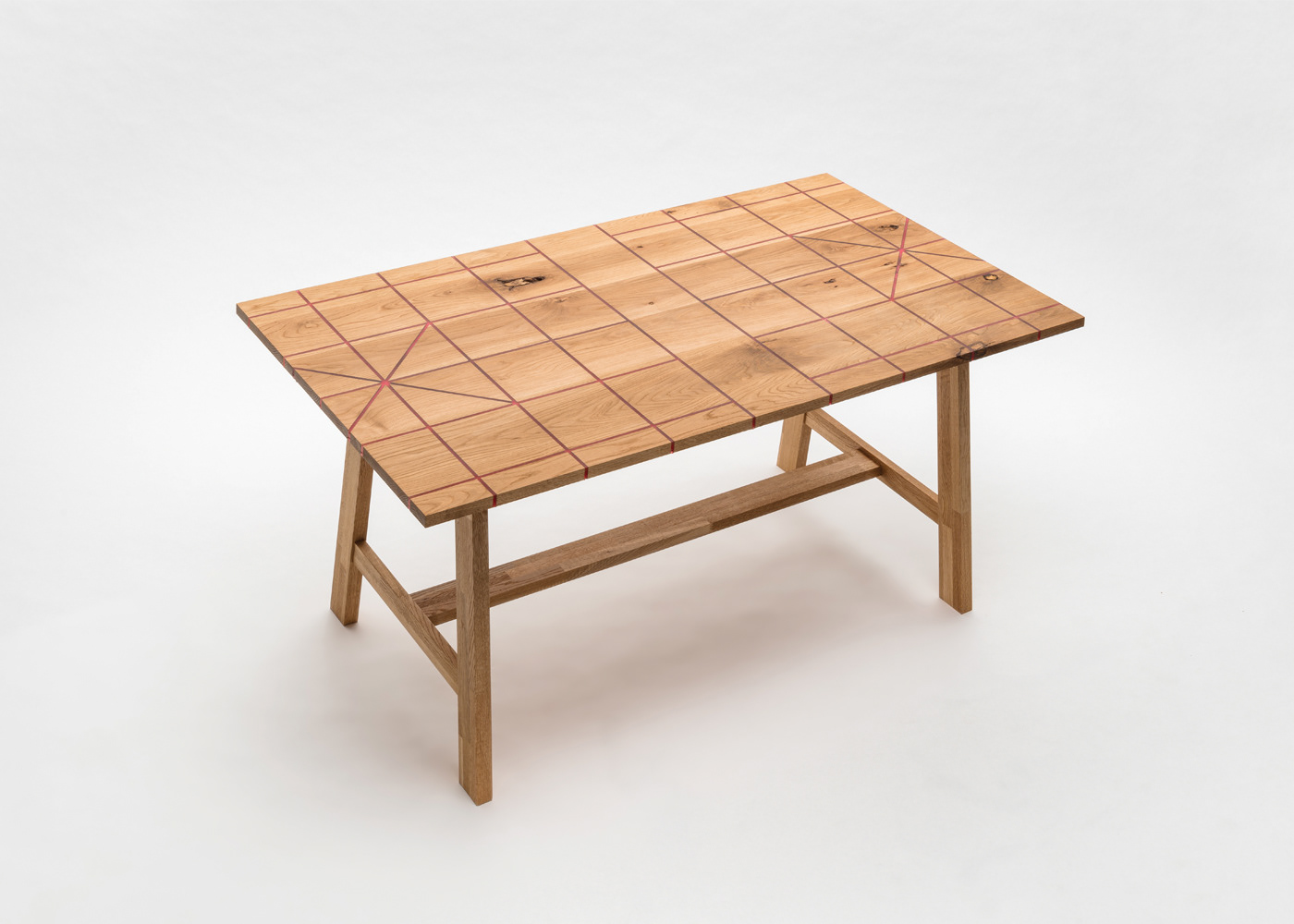
CHESS TABLE
Toki Sakurai
TABLE
MATERIAL: Oak, Resin
DIMENSION: W1400 D800 H700
This table expresses simple grid of chinese chess on its surface. The partially cut out grid
carries a specific meaning in Singapore culture.
The relationships between the pattern and material is interesting as the grid pattern is
expressed by focusing on the adhesive quality of epoxy resin with wood.

SUNSHADE
Mayuko Okamoto
LAMP
MATERIAL: MDF
DIMENSION: W600 D400 H400
Sunshade is an agglomeration of shadow and light.
Light shines out from the inner eaves, casting shadows on its surrounding. Using shapes
found in everyday objects of Singapore, the four layers emphasize the shape of the eaves
and it’s shadow to create a unique ambience.
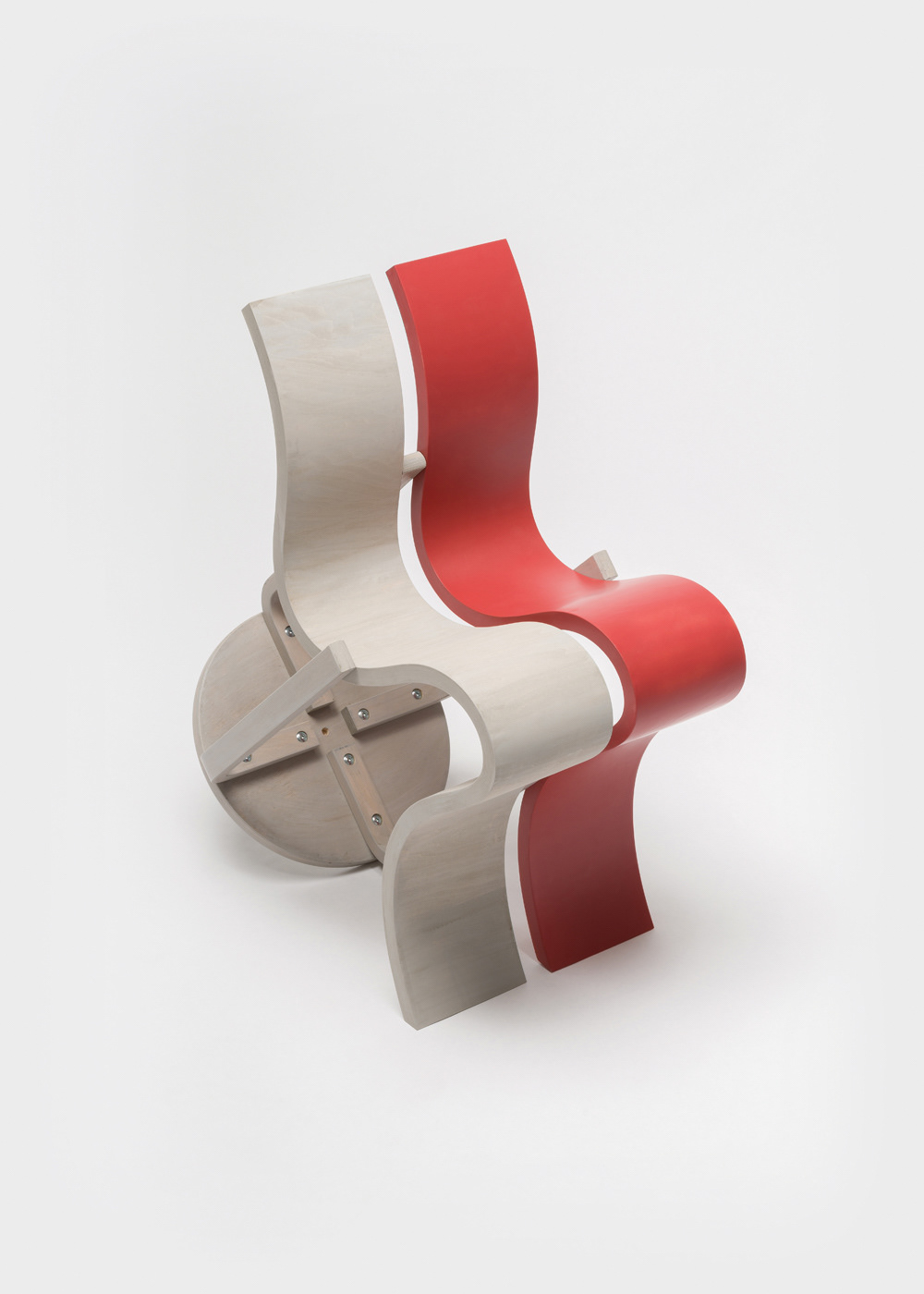
ADD
Mayu Noda
CHAIR
MATERIAL: Plywood
DIMENSION: W402 D706 H800
This is a chair made by adding parts onto an existing stool.
In a picture of Singapore, I found it interesting to see plastic signs attached onto old buildings,
changing these buildings’ function from residence to a visitor center.
So, in my design, I use the same analogy. The old stool is like an old building with added
parts, to create a new form.
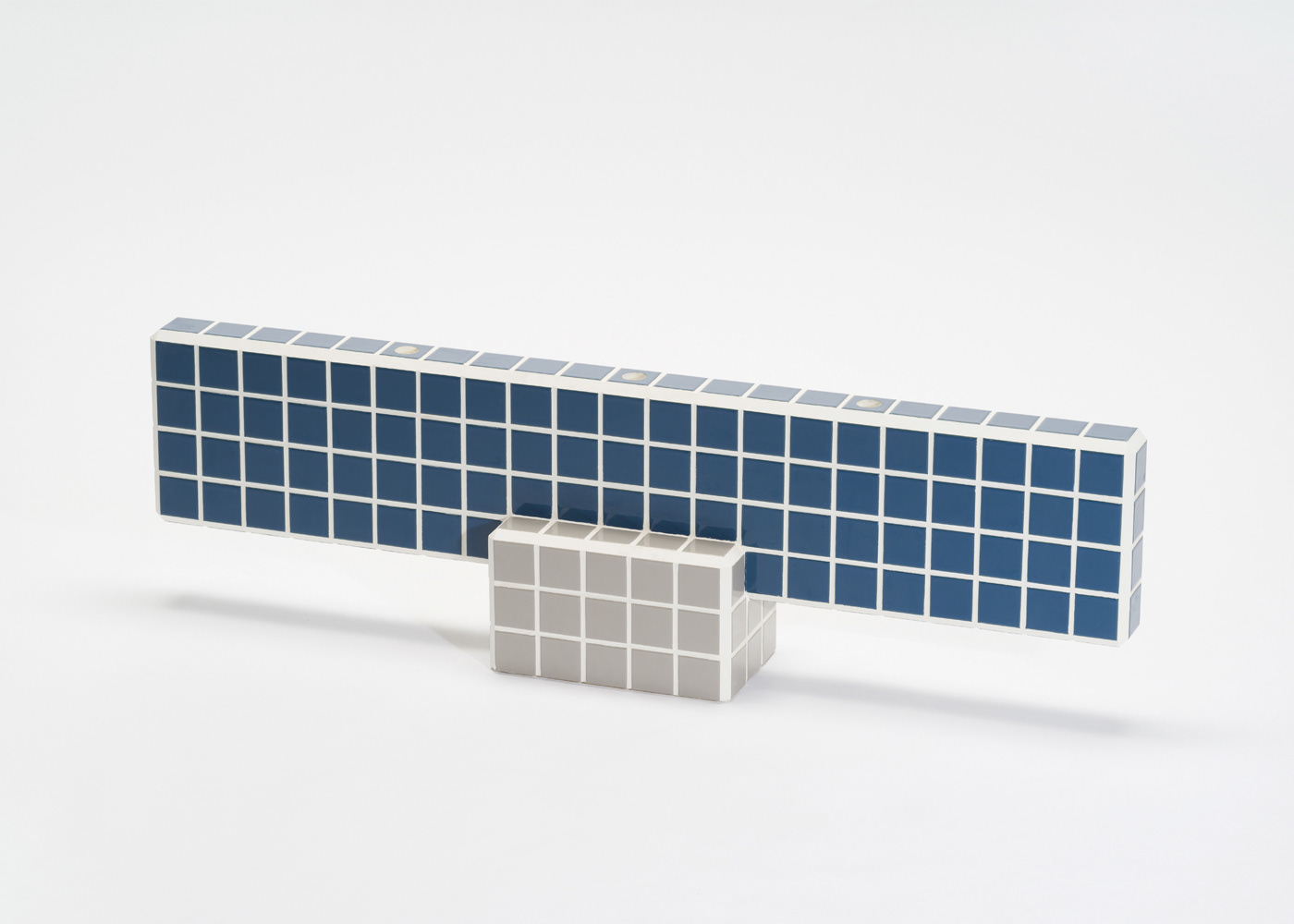
CANDLE STAND
Takuji Yoshida
CANDLE STAND
MATERIAL: Concrete, Tile
DIMENSION: W1050 D164 H300
Candle stand covered with tiles. I was inspired by a tiled table and a stool which can be
seen in the public spaces of Singapore and set the theme of tiled products. Excluding the
idea of functionality, I designed a product constructed from tiles and blocks.
